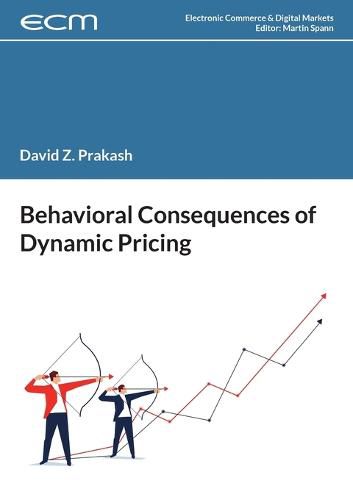Readings Newsletter
Become a Readings Member to make your shopping experience even easier.
Sign in or sign up for free!
You’re not far away from qualifying for FREE standard shipping within Australia
You’ve qualified for FREE standard shipping within Australia
The cart is loading…






This title is printed to order. This book may have been self-published. If so, we cannot guarantee the quality of the content. In the main most books will have gone through the editing process however some may not. We therefore suggest that you be aware of this before ordering this book. If in doubt check either the author or publisher’s details as we are unable to accept any returns unless they are faulty. Please contact us if you have any questions.
Digital technologies are driving the application of dynamic pricing. Today, this pricing strategy is used not only for perishable products such as flights or hotel rooms, but for almost any product or service category. With dynamic pricing, retailers frequently adjust their prices over time to respond to factors such as demand, their supply and that of competitors, or the time of sale. Additionally, dynamic pricing allows retailers to take advantage of a large share of consumers’ willingness to pay while avoiding losses from unsold products. Ultimately, this can lead to an increase in revenue and profit. However, the application of dynamic pricing comes with great challenges. In addition to the technological implementation, companies have to take into account that dynamic pricing can cause complex and unintended behavioral consequences on the consumer side. The key objective of this dissertation is to provide a deeper understanding of the impact of dynamic pricing on consumer behavior. To this end, this dissertation presents insights from four perspectives. First, how reference prices as a critical component in purchase decisions are operationalized. Second, how customers search for products priced dynamically, differentiated by business and private customers, as well as by different devices used for the search. Third, whether and how dynamic pricing influences the impact of internal reference prices on purchase decisions. Finally, this dissertation demonstrates that consumers perceive price changes as personalized in different purchase contexts, leading to reduced perceptions of fairness and undesirable behavioral consequences.
$9.00 standard shipping within Australia
FREE standard shipping within Australia for orders over $100.00
Express & International shipping calculated at checkout
This title is printed to order. This book may have been self-published. If so, we cannot guarantee the quality of the content. In the main most books will have gone through the editing process however some may not. We therefore suggest that you be aware of this before ordering this book. If in doubt check either the author or publisher’s details as we are unable to accept any returns unless they are faulty. Please contact us if you have any questions.
Digital technologies are driving the application of dynamic pricing. Today, this pricing strategy is used not only for perishable products such as flights or hotel rooms, but for almost any product or service category. With dynamic pricing, retailers frequently adjust their prices over time to respond to factors such as demand, their supply and that of competitors, or the time of sale. Additionally, dynamic pricing allows retailers to take advantage of a large share of consumers’ willingness to pay while avoiding losses from unsold products. Ultimately, this can lead to an increase in revenue and profit. However, the application of dynamic pricing comes with great challenges. In addition to the technological implementation, companies have to take into account that dynamic pricing can cause complex and unintended behavioral consequences on the consumer side. The key objective of this dissertation is to provide a deeper understanding of the impact of dynamic pricing on consumer behavior. To this end, this dissertation presents insights from four perspectives. First, how reference prices as a critical component in purchase decisions are operationalized. Second, how customers search for products priced dynamically, differentiated by business and private customers, as well as by different devices used for the search. Third, whether and how dynamic pricing influences the impact of internal reference prices on purchase decisions. Finally, this dissertation demonstrates that consumers perceive price changes as personalized in different purchase contexts, leading to reduced perceptions of fairness and undesirable behavioral consequences.